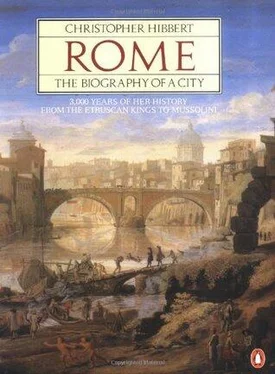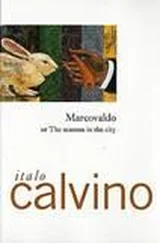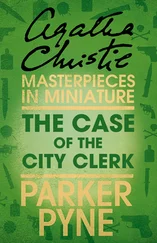Christopher Hibbert - Rome. The Biography of the City
Здесь есть возможность читать онлайн «Christopher Hibbert - Rome. The Biography of the City» весь текст электронной книги совершенно бесплатно (целиком полную версию без сокращений). В некоторых случаях можно слушать аудио, скачать через торрент в формате fb2 и присутствует краткое содержание. Жанр: Культурология, Искусство и Дизайн, на английском языке. Описание произведения, (предисловие) а так же отзывы посетителей доступны на портале библиотеки ЛибКат.
- Название:Rome. The Biography of the City
- Автор:
- Жанр:
- Год:неизвестен
- ISBN:нет данных
- Рейтинг книги:3 / 5. Голосов: 1
-
Избранное:Добавить в избранное
- Отзывы:
-
Ваша оценка:
- 60
- 1
- 2
- 3
- 4
- 5
Rome. The Biography of the City: краткое содержание, описание и аннотация
Предлагаем к чтению аннотацию, описание, краткое содержание или предисловие (зависит от того, что написал сам автор книги «Rome. The Biography of the City»). Если вы не нашли необходимую информацию о книге — напишите в комментариях, мы постараемся отыскать её.
Rome. The Biography of the City — читать онлайн бесплатно полную книгу (весь текст) целиком
Ниже представлен текст книги, разбитый по страницам. Система сохранения места последней прочитанной страницы, позволяет с удобством читать онлайн бесплатно книгу «Rome. The Biography of the City», без необходимости каждый раз заново искать на чём Вы остановились. Поставьте закладку, и сможете в любой момент перейти на страницу, на которой закончили чтение.
Интервал:
Закладка:
Nero was the great-grandson of Tiberius's wife, Julia, Augustus's daughter, who had formerly been married to Agrippa, commander of the Roman forces at Actium. By Agrippa, Julia had had five children, the youngest of whom had given birth to Caligula, Tiberius's successor. Caligula had spent much of his youth on the island of Capri, where Tiberius had spent the last ten years of his life in secluded retirement, and when he came to the imperial throne was still only twenty-four years old. Arrogant, profligate and mentally deranged, Caligula had no taste for the business of government and ruled through his secretaries, in the same way as Tiberius had governed through such deputies as Sejanus, whose overweening ambition had led to his execution in the ancient water cistern later converted into the dark dungeons of the Mamertine prison. 28But Caligula was not emperor for long. At the beginning of 41 he and his wife and daughter were all murdered by officers of the Praetorian Guard. Increasingly influential in imperial affairs, they had secured his succession less than four years previously and now arranged for the throne to pass to his well-meaning, though eccentric and probably spastic uncle, Claudius.
Claudius was married to Messalina, a lascivious and malevolent woman whom he was persuaded to have killed after she had taken part in a form of public wedding ceremony with her lover. He then married his niece Agrippina, a great-granddaughter of Augustus who was widely suspected of being responsible for poisoning him with a dish of deadly mushrooms. Nero was Agrippina's son by a previous and very rich husband.
He was sixteen when he became emperor, and he gave good grounds for hope that he would be a generous and discerning ruler. He was described as handsome with an imposing manner, though completely under the dominance of his formidable mother whom he both loved and feared. Yet it was not long before he displayed those characteristics of monstrous cruelty, abandoned profligacy and insane vanity described in the pages of Tacitus and Suetonius. ‘His body was blotchy and repulsive,’ Suetonius said. ‘He had blue myopic eyes and a thick neck. He had a paunch and his legs were excessively thin. He enjoyed good health. In spite of the immoderate luxury of his habits, he was ill on only three occasions in the fourteen years of his reign, and even then he never gave up drinking or changed his indulgent way of life… or the manner of his entertainments.’
The most notorious and profligate of these entertainments [according to Tacitus] were those given in Rome by Tigellinus [his unpleasant Sicilian principal minister and joint commander of the Praetorian Guard]. A banquet was set out upon a barge on a lake in the palace grounds. This barge was towed about by vessels picked out with gold and ivory and rowed by debauched youths who were chosen in accordance with their proficiency in libidinous practices. Birds and beasts had been collected from distant countries, and sea monsters from the ocean. On the banks of the lake were brothels filled with ladies of high rank. By these were prostitutes, stark naked, indulging in indecent gestures and language. As night approached the groves and summer-houses rang with songs and were ablaze with lights. Nero disgraced himself with every kind of abomination, natural and unnatural, leaving no further depth of debauchery to which he could sink.
Having arranged for the death of his mother who, after escaping murder by drowning, was battered to death by a gang of sailors, Nero then ordered the execution of his 19-year-old wife who died in a hot bath, bound with cords and with all her veins cut. Afterwards he married his mistress who died after a vicious kick from him when she was pregnant. Yet, depraved and monstrously cruel as he was, Nero did have artistic gifts and worked hard to develop them. He wrote poetry; he spent long hours practising on the harp; he endeavoured to improve his singing voice by lying with lead weights on his chest in painful attempts to strengthen his diaphragm; he studied Greek literature and sought to introduce Greek games and Greek contests in the arts, going so far as to perform himself in public, to the horror of the upper classes, not only as musician, poet and actor but even as charioteer. Nero also had pretensions and talents – as an amateur architect, and seems to have taken the deepest interest in the construction in 61 of the gymnasium and baths known as the Thermae Neroniae. 29
The Emperor's opportunities as a builder were spectacularly increased when, during the moonlit night of 18 July 64, a fire broke out in some shops near the Palatine and, fanned by the wind, soon spread uncontrollably throughout the city.
Furiously the destroying flames swept on [wrote Tacitus], first over the level ground, then up the heights, then again plunging into the hollows, with a rapidity which outstripped all efforts to cope with them, the ancient city lending itself to their progress by its narrow, tortuous streets and its misshapen blocks of buildings. The shrieks of panic-stricken women; the weakness of the aged, and the helplessness of the young; the efforts of some to help themselves, of others to help their neighbours; the hurrying of those who dragged their sick along, the lingering of those who waited for them – all added to the scene of utter confusion.
Nero was at Antium when the fire began. He hurried back to Rome to help direct the fire-fighting and to supervise the provision of shelter for the homeless. But any credit he might have been given for this was dispelled by a well-founded rumour that when the flames were at their height he had mounted a stage in his palace and had likened modern calamities to ancient disasters by singing a tale of the sack of Troy.
The fire, which had burned fiercely for six days, left most of Rome in smouldering ruins. Of the fourteen regions into which the city was then divided, only four remained intact. Three had been burned to the ground, and little had escaped in the other seven. The Emperor's palace, the Domus Transitoria , had been utterly destroyed. Nero set to work with a will, ordering the reconstruction of the city on more regular lines than had been possible in the haphazard, piecemeal building of the past, widening the streets, creating open spaces and providing tall apartment blocks for the workers who had lost their homes. Most of the Emperor's energies, however, went into the planning with his architects, Severus and Celer, of what became known as the Golden House, that magnificent palace whose porticoes, pavilions, baths, temples, fountains and gardens sprawled in lavish profusion across a 200-acre park extending from the Palatine hill across the valley to the Esquiline and taking in parts of the Caelian hill as well. In the valley was a large artificial lake surrounded by fanciful grottoes, columns and gazebos; and towering over the colonnaded approach to the golden façade of the palace itself was a colossal gilded bronze statue, 120 feet high, of Nero himself, the hero of the enterprise.
Inside the palace were white, painted rooms from which flowers fell upon the guests through fretted ivory ceilings; walls were inlaid with mother-of-pearl and precious stones; concealed jets in the cornices sprayed fine showers of rose water and scent; the roof of a great dining-hall ‘revolved slowly day and night in time with the sky’; streams of water flowed down a staircase over a glistening mosaic floor; water from the sea and sulphur-water from Tivoli poured into the palace's baths; on every side were works of art from Greece including, perhaps, the Laocoön. 30
Little now remains of this Domus Aurea, which Nero's successors converted to public use before it was swept by a raging fire in A.D. 104. But in the fifteenth century some of its rooms, with delicately painted stucco reliefs by the artist known as Fabullus, were discovered buried in the earth beneath the Baths of Trajan; and these rooms, to which artists were lowered by ropes so that they could inspect the work of their great and ancient predecessor, were the inspiration of both Raphael and Giovanni da Udine for their decorations of the open galleries of the Vatican. 31
Читать дальшеИнтервал:
Закладка:
Похожие книги на «Rome. The Biography of the City»
Представляем Вашему вниманию похожие книги на «Rome. The Biography of the City» списком для выбора. Мы отобрали схожую по названию и смыслу литературу в надежде предоставить читателям больше вариантов отыскать новые, интересные, ещё непрочитанные произведения.
Обсуждение, отзывы о книге «Rome. The Biography of the City» и просто собственные мнения читателей. Оставьте ваши комментарии, напишите, что Вы думаете о произведении, его смысле или главных героях. Укажите что конкретно понравилось, а что нет, и почему Вы так считаете.












